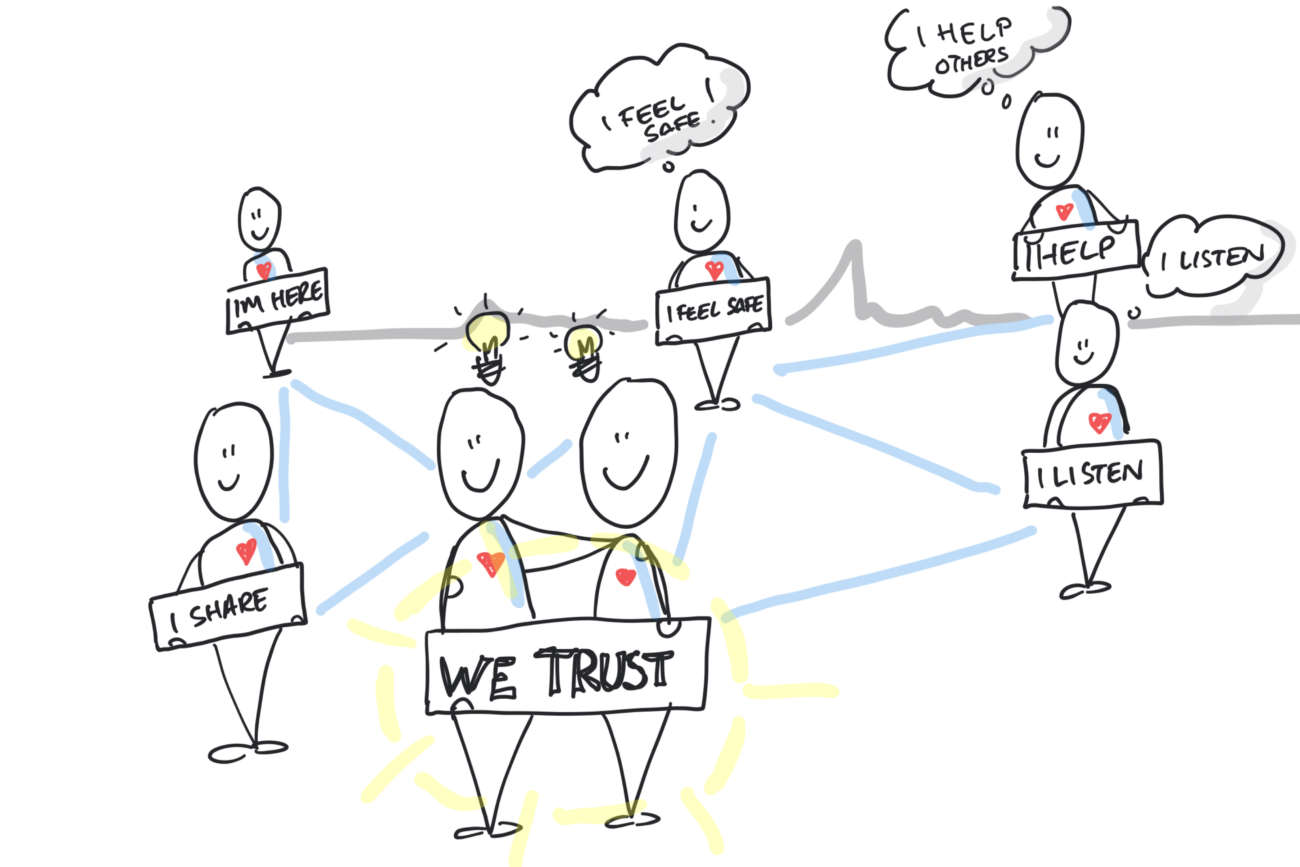LEADERS ARE HEROES TOO
OUR POINT OF VIEW

LEADERS BRING CHANGE AND ENGAGE PEOPLE. THIS IS ART!
Leaders bring change. Great leaders also help people go through change in a safe way. Change is perceived as risky, scary and dangerous. This is how we are wired as human beings … We all react differently to change and disruption, and the reactions can be hard to predict. If this this is not enough of a challenge already, a good part of our behavior is driven by thoughts, feelings and assumptions that are out of awareness.
Therefore, we see emotional intelligence and change as two key components of leadership, that goes far beyond being a skill or a “tool”. Developing your understanding of how emotions drive behavior and impact change may provide entirely new perspectives on what a high performance, human-centric business can look like, and this in turn can enable a strong competitive positioning.
OUR LEADERSHIP MODEL
Emotions drive behavior
We believe emotional intelligence is a key differentiator and competitive advantage for any organization. Our ability to understand our own, and others’ emotions defines how efficient and effective we are in communication, collaborating, creating value, solving problems, being creative and prosper. Emotional intelligence is not mystery and magic. Some people are gifted with emotional capabilities “innately” (and we can debate if it is nature or nurture). Others can learn, train and develop the capabilities. And while everyone could, and probably should develop these skills, regardless of their position in the organization, it is something that merits thought. Pre-requisites to develop emotional intelligence is an environment of Trust, Respect, and Integrity.
Make change happen
The other key dimension is change and transition: By nature, we are resistant to change as human beings. “If it is not broken, do not fix it” the old saying goes. We will however change quickly, if our existence is threatened… this is what has helped us survive since dawn. Understanding how individuals and teams react to specific change, is therefore fundamental for anyone who leads change. But being willing to change is not enough. With change comes also a need to learn, and this can be painful. Learning new skills is ok, yet hard. Learning new behavior is harder… And if the change implies that you may need to revisit your self-image, identity or beliefs, then you may need a high level of emotional intelligence as a leader to guide, support and enable your team to change, and stay engaged.
T.H.E ORIGINS - LEADERSHIP AND COACHING
Experiments, Experience and Evolution, by Victor Svensson
My personal leadership journey took an interesting turn a few years ago. I had advanced relatively quickly to director level in a global IT company but I felt more and more of a discord with my surroundings. At that time, I signed up for the EMCCC program at INSEAD, which turned out to be life changing.
The faculty is at large trained psychologists, psychoanalysts and psychiatrists. What I learned from some of the best executive coaches in the world during this program was the value of understanding emotions. Starting with your own, and then others. Emotions drive behavior. This is the place where we can create tipping points for employee engagement, accelerate transformations, and resolve dysfunctions. For me personally, it is helping me becoming the leader I always had aspired to be, connected to people around me and confident in acting on my ideas.
The knowledge and skills acquired in the EMCCC program is the foundation for our leadership and coaching capabilities and covers a broad range of methods, tools and techniques.

